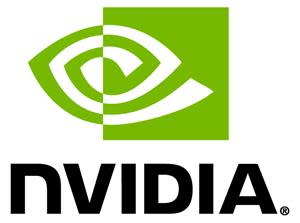NVIDIA
New Services Accelerate Universal Scene Description-Based Workflows and Development of Industrial Digital Twins and Robotics
OpenUSD to Industrial Digitalization
The USD Search NIM microservice for working with OpenUSD can perform text-based searches of 3D assets.
DENVER, July 29, 2024 (GLOBE NEWSWIRE) — SIGGRAPH—NVIDIA today announced major advancements to Universal Scene Description, or OpenUSD, that will expand adoption of the universal 3D data interchange framework to robotics, industrial design and engineering, and accelerate developers’ abilities to build highly accurate virtual worlds for the next evolution of AI.
Through new OpenUSD-based generative AI and NVIDIA-accelerated development frameworks built on the NVIDIA Omniverse™ platform, more industries can now develop applications for visualizing industrial design and engineering projects, and for simulating environments to build the next wave of physical AI and robots.
The new offerings include NVIDIA NIM™ microservices for AI models that can generate OpenUSD language to answer user queries, generate OpenUSD Python code, apply materials to 3D objects, and understand 3D space and physics to help accelerate digital twin development. In addition, new USD connectors to robotics and industrial simulation data formats and developer tools let users stream massive, fully NVIDIA RTX™ ray-traced datasets to Apple Vision Pro.
“The generative AI boom for heavy industries is here,” said Rev Lebaredian, vice president of Omniverse and simulation technology at NVIDIA. “Until recently, digital worlds have been primarily used by creative industries; now, with the enhancements and accessibility NVIDIA NIM microservices are bringing to OpenUSD, industries of all kinds can build physically based virtual worlds and digital twins to drive innovation while preparing for the next wave of AI: robotics.”
Generative AI Comes to USD With NVIDIA NIM
The world’s first generative AI models for OpenUSD development, developed by NVIDIA, will be available as NVIDIA NIM microservices. The models enable developers to incorporate generative AI copilots and agents into USD workflows, broadening the possibilities in 3D worlds and helping speed the adoption of USD across a new range of industrial sectors, like manufacturing, automotive and robotics.
The microservices available in preview are:
-
USD Code NIM microservice — answers general knowledge OpenUSD questions and automatically generates OpenUSD-Python code based on text prompts that can then be inputted into an OpenUSD viewing app, such as usdview from Pixar, or an NVIDIA Omniverse Kit-based application to visualize the corresponding 3D data.
-
USD Search NIM microservice — enables developers to search through massive libraries of OpenUSD, 3D and image data using natural language or image inputs.
-
USD Validate NIM microservice — checks the compatibility of uploaded files against OpenUSD release versions and generates a fully RTX-rendered, path-traced image, powered by NVIDIA Omniverse Cloud APIs, or application programming interfaces.
Story continues
Newly announced microservices that will be available soon are:
-
USD Layout NIM microservice — enables users to assemble OpenUSD-based scenes from a series of text prompts based on spatial intelligence.
-
USD SmartMaterial NIM microservice — predicts and applies a realistic material to a computer-aided design object.
-
fVDB Mesh Generation NIM microservice — generates an OpenUSD-based mesh, rendered by Omniverse Cloud APIs, from point-cloud data.
-
fVDB Physics Super-Res NIM microservice — performs AI super resolution on a frame or sequence of frames to generate an OpenUSD-based, high-resolution physics simulation.
-
fVDB NeRF-XL NIM microservice — generates large-scale neural radiance fields in OpenUSD using Omniverse Cloud APIs.
Foxconn, a global manufacturing leader with more than 170 factories worldwide, is already benefiting from NVIDIA’s computing platform, using NIM microservices and Omniverse to create a digital twin of a factory under development.
“Digital twins will help us accelerate the next wave of industrial manufacturing and autonomous machines,” said Zhe Shi, chief digital officer and head of the Smart Manufacturing platform at Foxconn. “NVIDIA Omniverse and the new NIM microservices will democratize the ability to develop digital twins and help our teams build physically based virtual factories faster than ever.”
WPP, a world leader in marketing and communications services company, is an early adopter of USD Search and USD Code NIM microservices, implementing them in its generative AI-enabled content creation pipeline, built on NVIDIA Omniverse, for customers such as The Coca-Cola Company.
“The beauty of the innovation is how compatible it is with the way we work, and that it leverages open standards — accelerating not only future work, but allowing us to continue to build on and extend the usefulness of all our previous investments in standards like OpenUSD,” said Stephan Pretorius, chief technology officer at WPP. “Using NVIDIA NIM microservices with NVIDIA Omniverse has made it possible for us to launch innovative new production tools with companies like The Coca-Cola Company at unprecedented speed.”
USD Connectors Bring Generative AI to More Industries
A series of new USD connectors for robotics data formats and streaming to Apple Vision Pro opens the portals of OpenUSD interoperability and advanced authoring to more industries.
NVIDIA and Siemens, a global leader in industrial automation and software, are extending their collaboration to facilitate more industrial workloads using OpenUSD. Siemens will integrate OpenUSD pipelines with its Simcenter portfolio of simulation technologies to support evidence-based decision-making and collaboration among key stakeholders.
This integration enables high-fidelity, real-time, photorealistic visualization of complex simulation data, providing deeper insights into a product’s performance within its real-world operating environment. The work will build on Siemens’ efforts to incorporate Omniverse into its Teamcenter Product Lifecycle Management portfolio.
NVIDIA also released a connector from Unified Robotics Description Format to OpenUSD, letting roboticists seamlessly bring their robot data across applications, including for design, simulation and reinforcement learning.
To further advance OpenUSD ecosystem expansion, NVIDIA announced the OpenUSD Exchange software development kit, enabling developers to build their own robust OpenUSD data connectors.
New developer tools and APIs to stream large-scale OpenUSD scenes from an application built on the Omniverse platform to Apple Vision Pro via the NVIDIA Graphics Delivery Network are now available in early access.
“OpenUSD is revolutionizing the way we create and interact with 3D content,” said Steve May, chief technology officer of Pixar and chairman of the Alliance for OpenUSD (AOUSD). “Now, with these new services and APIs for OpenUSD built by NVIDIA, we expect to see accelerated growth and adoption of USD, paving the way for new users and industries to more easily engage with our ecosystem.”
OpenUSD Ecosystem Momentum
Last year, NVIDIA cofounded the AOUSD along with Pixar, Adobe, Apple and Autodesk. Through AOUSD, NVIDIA and other collaborators have announced a new OpenUSD release, progress on an OpenUSD core specification and new members.
Availability
The USD Search, USD Code and USD Validate NIM microservices are available in preview on the NVIDIA API catalog. The OpenUSD to URDF connector is now available with NVIDIA Isaac Sim™.
Developers can get started integrating generative AI into OpenUSD workflows with new Omniverse developer tools and a reference workflow for building a generative AI-enabled synthetic data pipeline with OpenUSD.
Learn more about the latest in generative AI and accelerated computing by tuning in to NVIDIA founder and CEO Jensen Huang’s fireside chats at SIGGRAPH, the premier computer graphics conference, running through Aug. 1 in Denver.
About NVIDIA
NVIDIA (NASDAQ: NVDA) is the world leader in accelerated computing.
For further information, contact:
Janette Ciborowski
Corporate Communications
NVIDIA Corporation
+1-734-330-8817
jciborowski@nvidia.com
Certain statements in this press release including, but not limited to, statements as to: the benefits, impact, performance, features, and availability of NVIDIA’s products and technologies, including NVIDIA Omniverse, NVIDIA NIM microservices, NVIDIA RTX, USD Code NIM, USD Search NIM, USD Validate NIM, NVIDIA Omniverse Cloud APIs, USD Layout NIM, USD SmartMaterial NIM, fVDB Mesh Generation NIM, fVDB Physics Super-Res NIM, fVDB NeRF-XL NIM and NVIDIA Graphics Delivery Network; third parties using or adopting NVIDIA products, technologies and platforms, and the benefits and impacts thereof; our collaboration with third parties and the benefits and impacts thereof; with the enhancements and accessibility NVIDIA NIM microservices bringing to OpenUSD, industries of all kinds being able to build physically based virtual worlds and digital twins to drive innovation while preparing for robotics, the next wave of AI; and the impact of OpenUSD are forward-looking statements that are subject to risks and uncertainties that could cause results to be materially different than expectations. Important factors that could cause actual results to differ materially include: global economic conditions; our reliance on third parties to manufacture, assemble, package and test our products; the impact of technological development and competition; development of new products and technologies or enhancements to our existing product and technologies; market acceptance of our products or our partners’ products; design, manufacturing or software defects; changes in consumer preferences or demands; changes in industry standards and interfaces; unexpected loss of performance of our products or technologies when integrated into systems; as well as other factors detailed from time to time in the most recent reports NVIDIA files with the Securities and Exchange Commission, or SEC, including, but not limited to, its annual report on Form 10-K and quarterly reports on Form 10-Q. Copies of reports filed with the SEC are posted on the company’s website and are available from NVIDIA without charge. These forward-looking statements are not guarantees of future performance and speak only as of the date hereof, and, except as required by law, NVIDIA disclaims any obligation to update these forward-looking statements to reflect future events or circumstances.
Many of the products and features described herein remain in various stages and will be offered on a when-and-if-available basis. The statements above are not intended to be, and should not be interpreted as a commitment, promise, or legal obligation, and the development, release, and timing of any features or functionalities described for our products is subject to change and remains at the sole discretion of NVIDIA. NVIDIA will have no liability for failure to deliver or delay in the delivery of any of the products, features or functions set forth herein.
© 2024 NVIDIA Corporation. All rights reserved. NVIDIA, the NVIDIA logo, NVIDIA NIM, NVIDIA Omniverse and NVIDIA RTX are trademarks and/or registered trademarks of NVIDIA Corporation in the U.S. and other countries. Other company and product names may be trademarks of the respective companies with which they are associated. Features, pricing, availability and specifications are subject to change without notice.
A photo accompanying this announcement is available at https://www.globenewswire.com/NewsRoom/AttachmentNg/31900737-5b1a-4c74-afcd-a668fd63cee7




